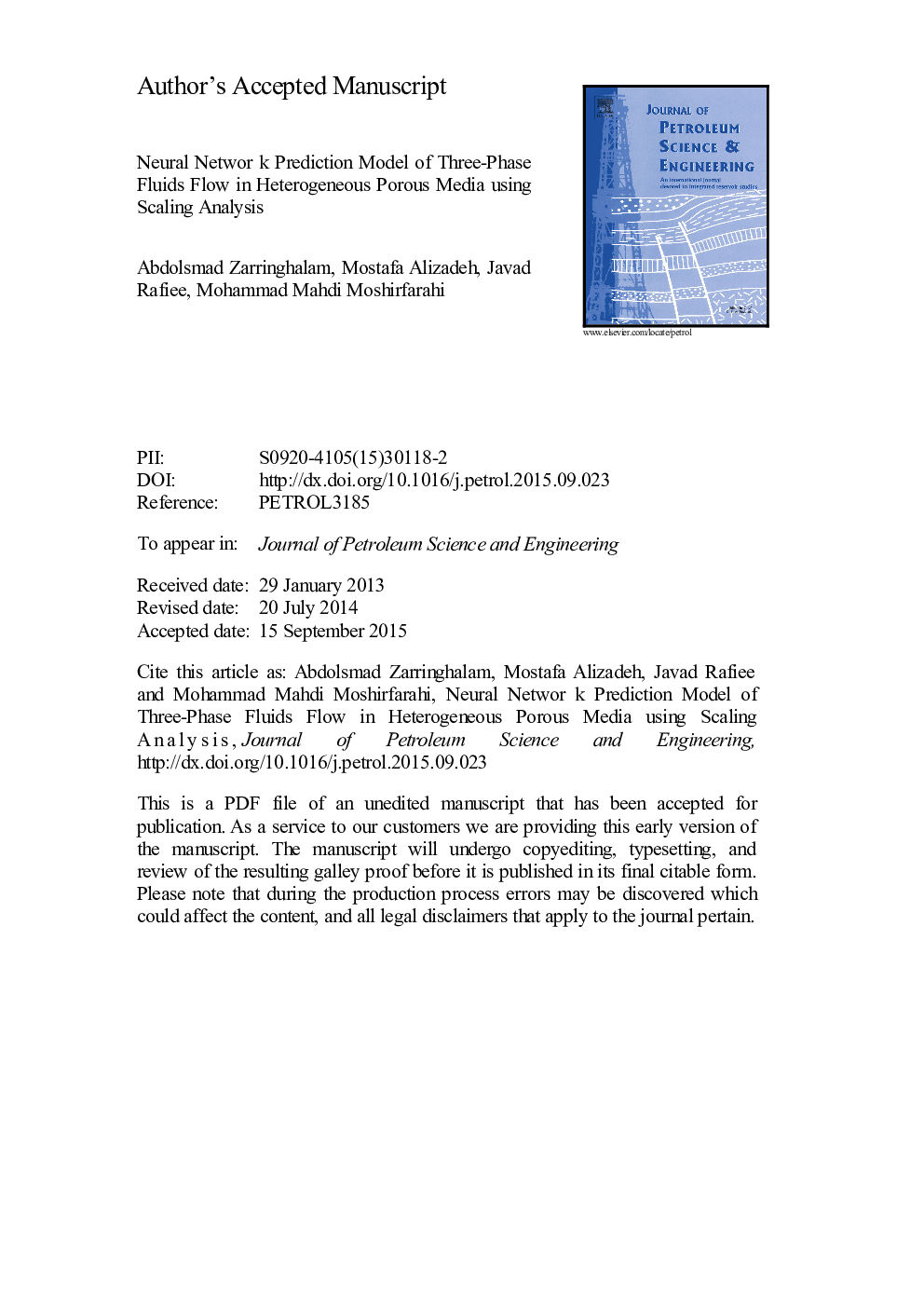| Article ID | Journal | Published Year | Pages | File Type |
|---|---|---|---|---|
| 8126285 | Journal of Petroleum Science and Engineering | 2016 | 46 Pages |
Abstract
Scaling analysis of fluid displacement in porous media is a reliable, fast method to evaluate the displacement performance of different oil production processes under various conditions. This paper presents the scaling studies of multiphase fluid flow through permeable media with a special attention to the three-phase immiscible water alternating gas (WAG) flooding under conditions prevailing in many oil reservoirs. The investigations are performed on a heterogeneous reservoir to study in detail the sensitivity of the displacement process to the scaling groups using various combinations of the process controlling parameters. The procedure of Inspectional analysis (IA) was utilized to determine dimensionless scaling groups that characterize the flow. Based on the IA method, the scaling of immiscible three-phase displacement in a heterogeneous medium needs matching of eight dimensionless groups along with four heterogeneity scaling groups. A series of numerical sensitivity analysis were conducted to determine the magnitude of the scaling groups and to reveal their interaction with the recovery efficiency. The sensitivity analysis indicated that 9 dimensionless groups were essential for scaling immiscible WAG displacement. The scaling groups are used as the input parameters to develop an artificial neural network (ANN) prediction model. The metaheuristics Ant Colony Optimization (ACO) algorithm was combined with a gradient based algorithm to obtain a highly effective hybrid optimization algorithm for neural network training. The proposed algorithm combined the global ability of metaheuristics and the local greedy gradient based algorithm resulting in a superior hybrid method. The network input consists of 9 dimensionless groups that crucially dominate the displacement efficiency. The results proved that the introduced ANN model is reliable and capable in proposing a proper development plan for a reservoir and/or to determine the optimal plan of operation. The proposed ANN model can be used to understand how key parameters affect oil recovery without using extensive numerical modeling based on the detailed knowledge of the oil reservoir.
Keywords
Related Topics
Physical Sciences and Engineering
Earth and Planetary Sciences
Economic Geology
Authors
Abdolsmad Zarringhalam, Mostafa Alizadeh, Javad Rafiee, Mohammad Mahdi Moshirfarahi,
